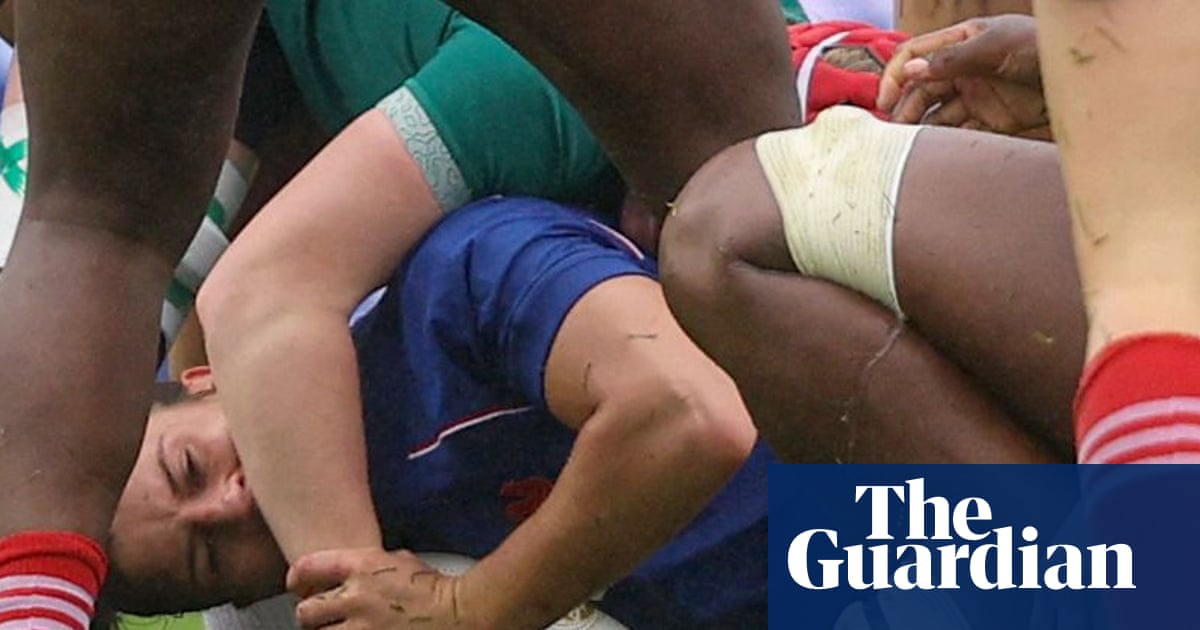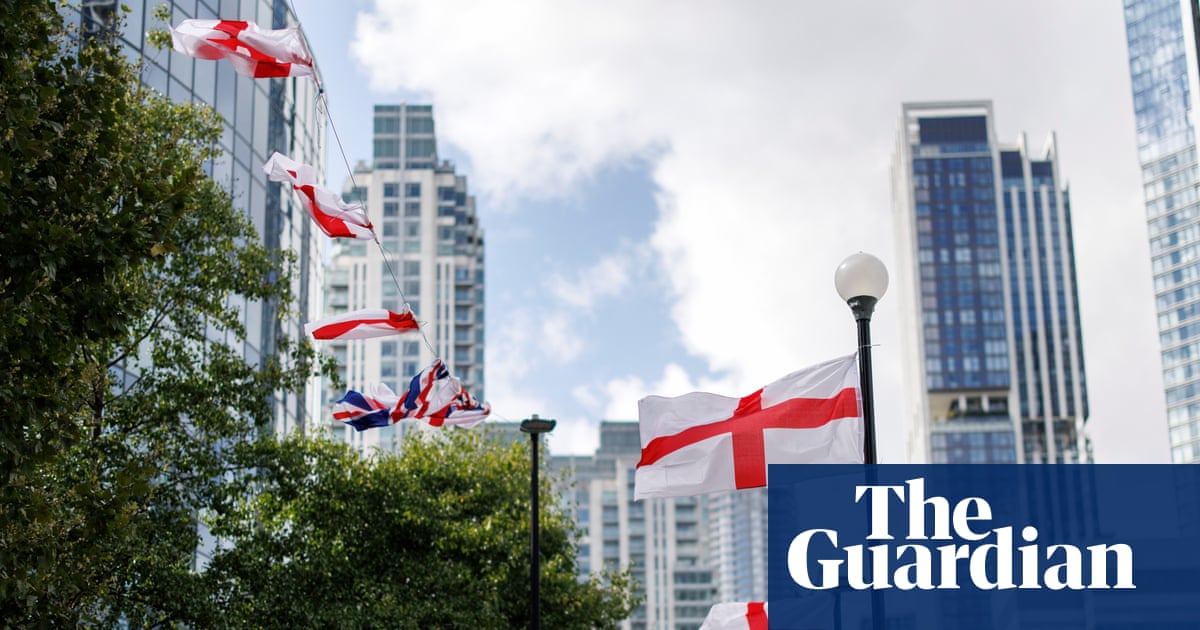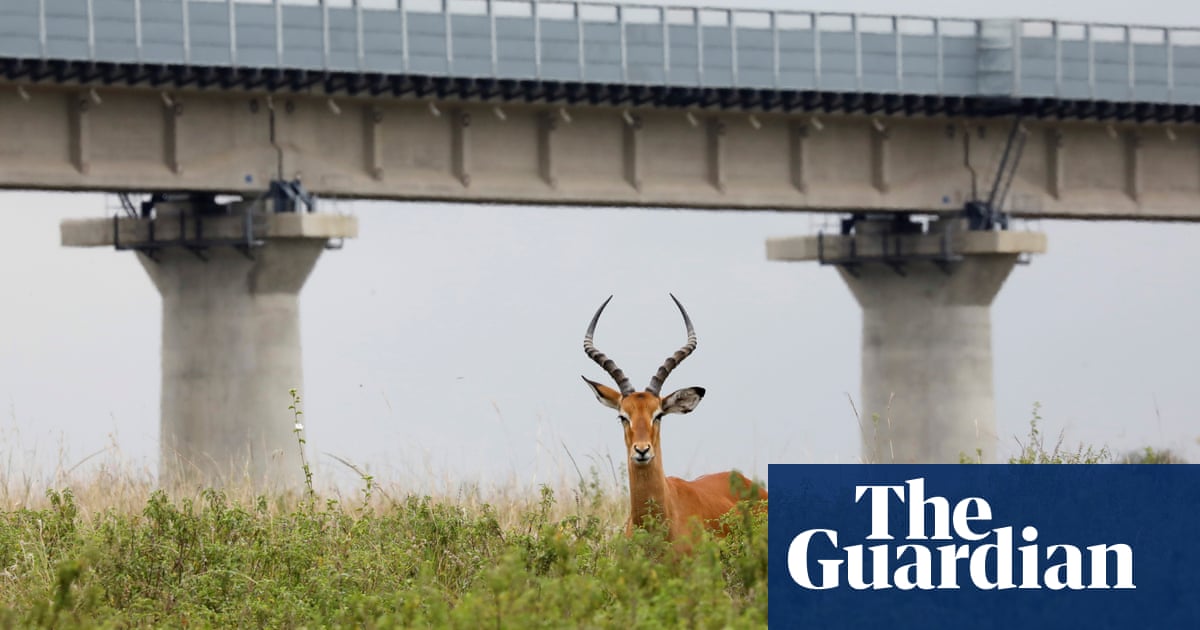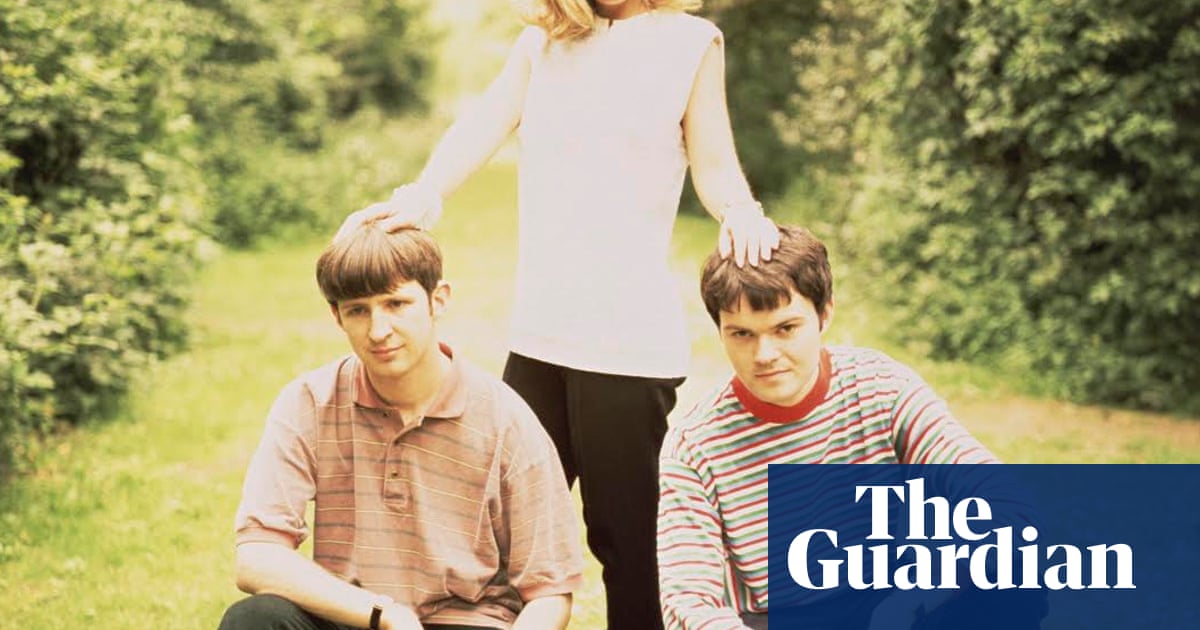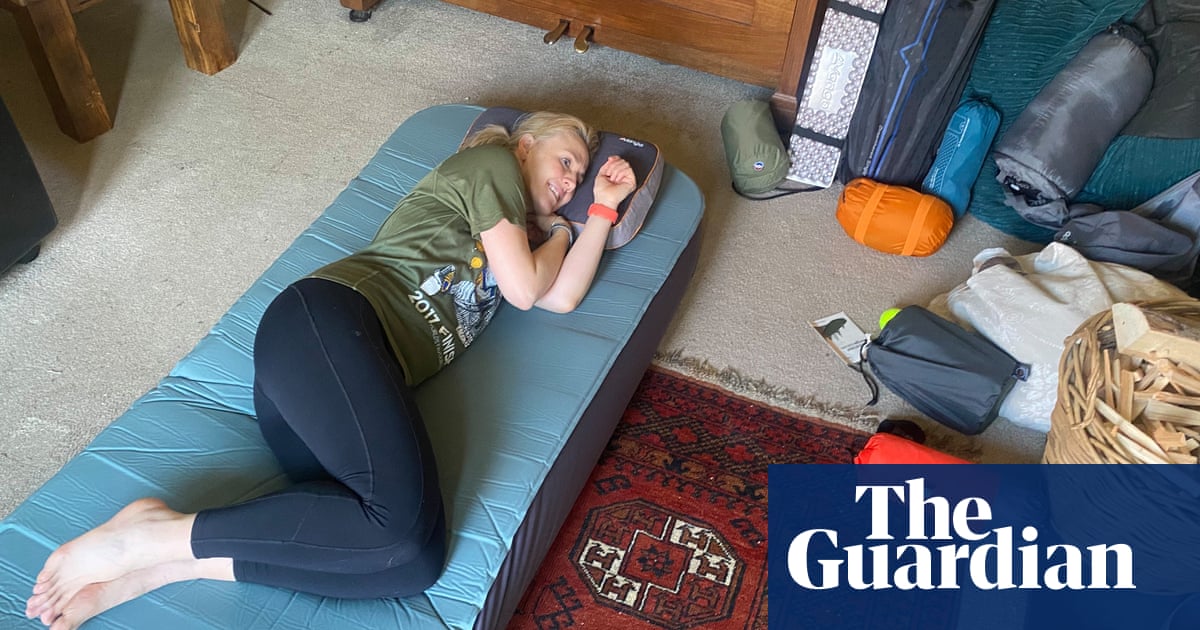Alexander MacLeod, a Harris tweed weaver, outside an atelier at his home on the island of Scalpay in the Outer Hebrides
Photograph: Andy Buchanan/AFP/Getty Images
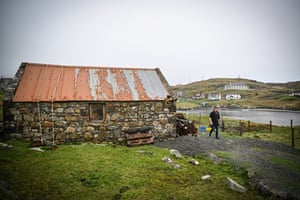
‘When you see tweed on the catwalks, you’d never think it came from here,’ says MacLeod, 38, a former banker
Photograph: Andy Buchanan/AFP/Getty Images
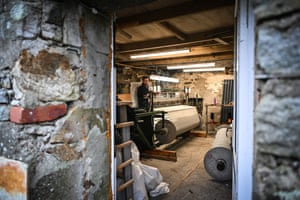
A weaving loom with an under-weaving Harris tweed cloth. Traditionally made from 100% wool, Harris tweed is protected by a 1993 act of parliament. It must be ‘handwoven by the islanders at their homes in the Outer Hebrides, finished in the Outer Hebrides, and made from pure virgin wool dyed and spun in the Outer Hebrides’
Photograph: Andy Buchanan/AFP/Getty Images
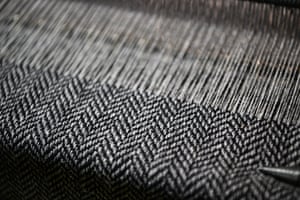
MacLeod became a weaver two years ago, contributing, with other residents of the Isles of Lewis and Harris, to the rejuvenation of the tweed industry after a long period of decline. ‘It’s a good thing to keep the tradition going,’ he says
Photograph: Andy Buchanan/AFP/Getty Images
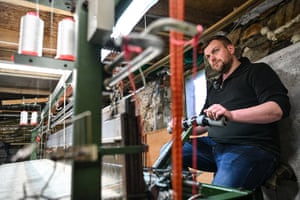
Weaving tools. Tweed is a symbol of Scottish heritage and has ‘always been part of the culture’ on the Outer Hebrides, says Macleod, who hails from Scalpay, which is connected to Harris by a bridge
Photograph: Andy Buchanan/AFP/Getty Images

It’s now ‘an attractive sector to be in’, MacLeod says. He left the Hebrides for seven years to work in banking but the pull of his roots proved too strong. During the day, MacLeod works for a local cosmetics company. In the evenings, he puts on a podcast, usually about espionage, and patiently begins to weave. Only the steady hum of his machine disturbs the calm of the old stone barn
Photograph: Andy Buchanan/AFP/Getty Images
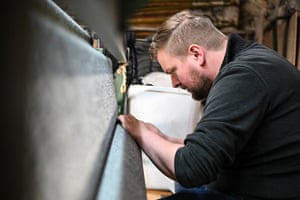
A member of staff at Carloway Mill processes and prepares wool for the weaving of Harris tweed. Carloway is one of three spinning mills in the west of the Isle of Lewis
Photograph: Andy Buchanan/AFP/Getty Images
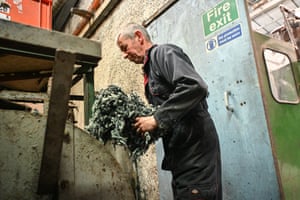
The industry is enjoying a resurgence, with more than 580,000 metres of tweed produced in 2024
Photograph: Andy Buchanan/AFP/Getty Images

Luxury brands such as Christian Dior, Chanel and Gucci are among the buyers of Harris tweed, and shoe brands such as Nike, New Balance and Converse have used it for limited-edition products
Photograph: Andy Buchanan/AFP/Getty Images
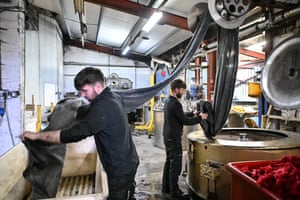
A weaving loom in the Carloway Mill workshop
Photograph: Andy Buchanan/AFP/Getty Images

Photograph: Andy Buchanan/AFP/Getty Images
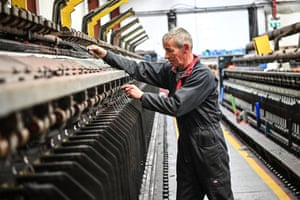
Photograph: Andy Buchanan/AFP/Getty Images
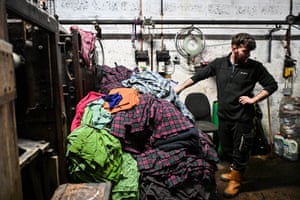
Photograph: Andy Buchanan/AFP/Getty Images

Photograph: Andy Buchanan/AFP/Getty Images
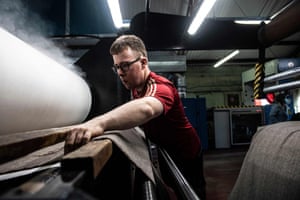
Wool to be used in Harris tweed
Photograph: Andy Buchanan/AFP/Getty Images
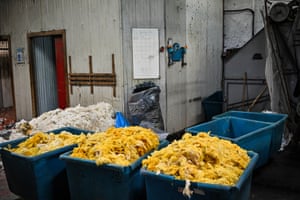
Spools of yarn at the mill
Photograph: Andy Buchanan/AFP/Getty Images
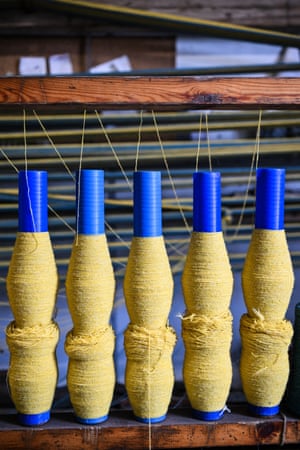
Dyed wool sorted into colours
Photograph: Andy Buchanan/AFP/Getty Images
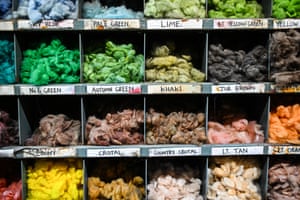
Rolls of the final product
Photograph: Andy Buchanan/AFP/Getty Images
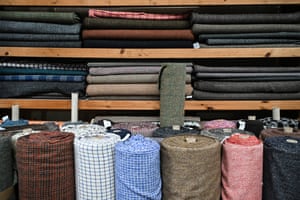
Kelly MacDonald, the operations manager of the Harris Tweed Authority, behind a weaving loom at her office in Stornoway. ‘It’s nice to see younger people coming in,’ she says. ‘When I joined the industry 22 years ago, there was a severe period of decline. I was wondering: is there going to be an industry any more?’
Photograph: Andy Buchanan/AFP/Getty Images
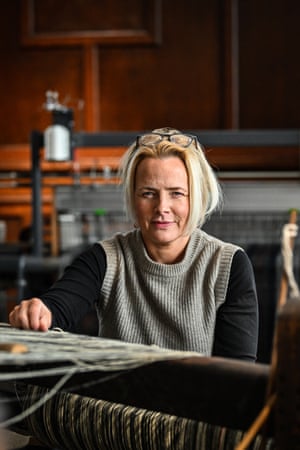
Minnie Hooper, a weaver, at the Harris Tweed Authority building in Stornoway. There are 140 weavers, according to the HTA, which launched a recruitment campaign in 2023 and offered workshops to learn the trade after a wave of retirements
Photograph: Andy Buchanan/AFP/Getty Images
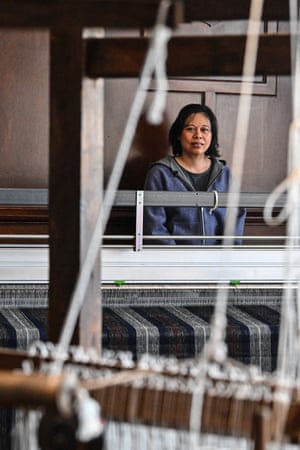
Minnie Hooper’s weaving loom
Photograph: Andy Buchanan/AFP/Getty Images
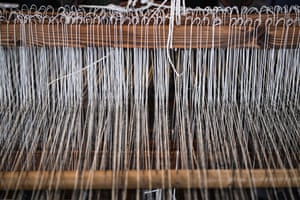
Yarn used by Hooper
Photograph: Andy Buchanan/AFP/Getty Images
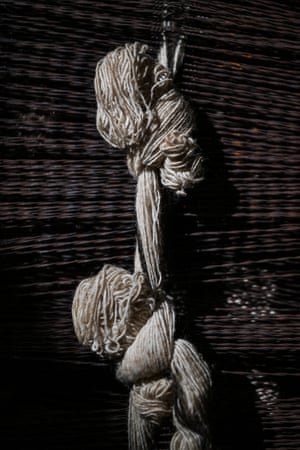
Cloth displayed at the Harris Tweed Isle of Harris shop in Tarbert
Photograph: Andy Buchanan/AFP/Getty Images
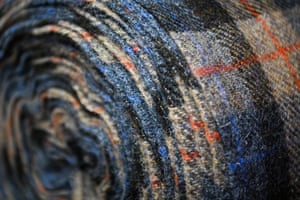
Shaun Campbell moves rolls of Harris tweed in the Tarbert shop
Photograph: Andy Buchanan/AFP/Getty Images

The Harris tweed stamp, a globe topped with a cross, certifies the fabric’s provenance and authenticity and is issued by the Harris Tweed Authority
Photograph: Andy Buchanan/AFP/Getty Images
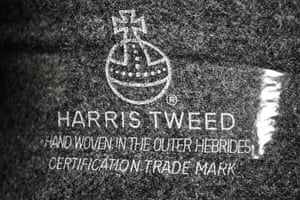
Harris tweed stoles for sale in Tarbert
Photograph: Andy Buchanan/AFP/Getty Images
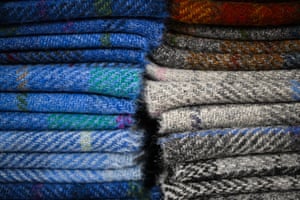
Blackface sheep and lambs, whose wool is used in Harris tweed production, grazing on the Isle of Harris
Photograph: Andy Buchanan/AFP/Getty Images
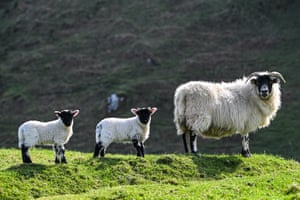

.png) 3 months ago
73
3 months ago
73











